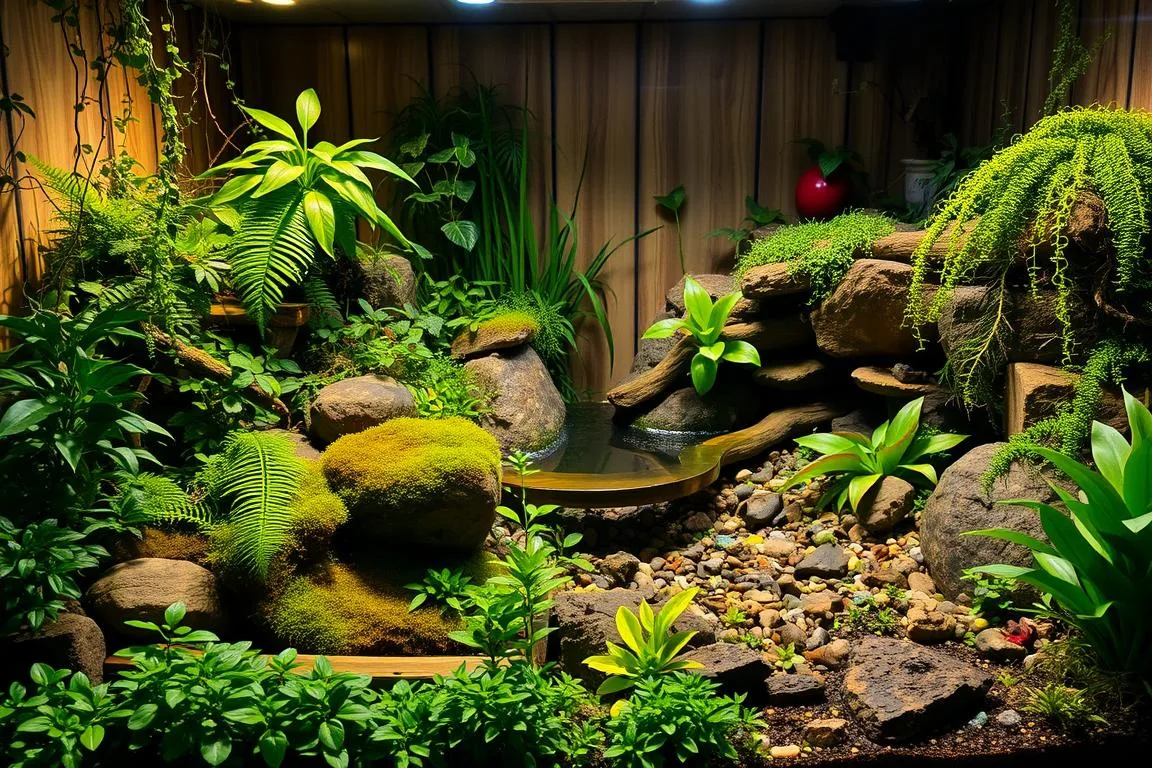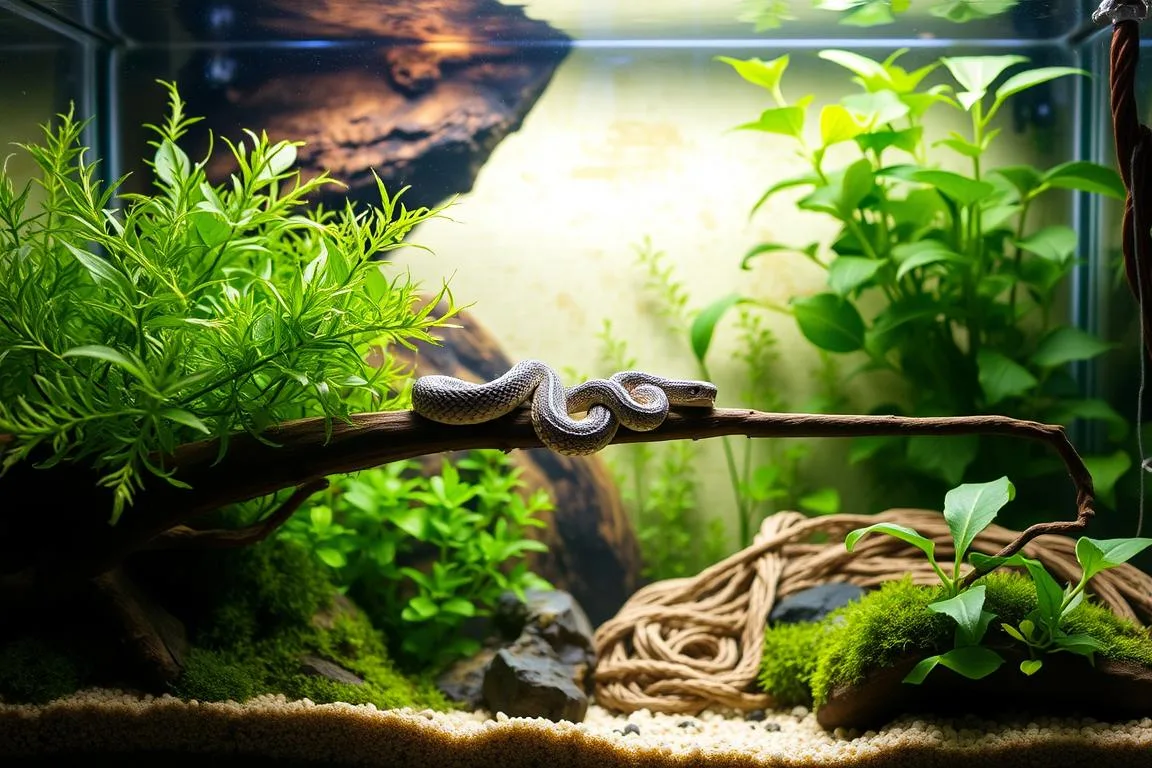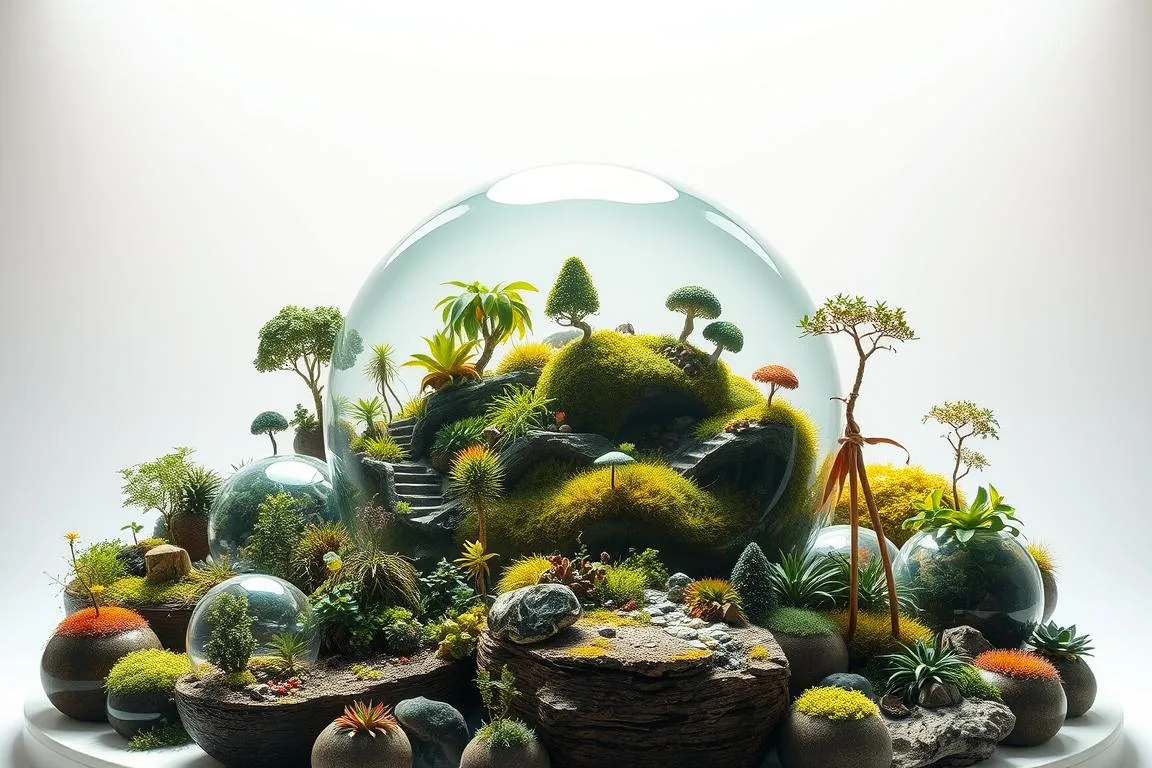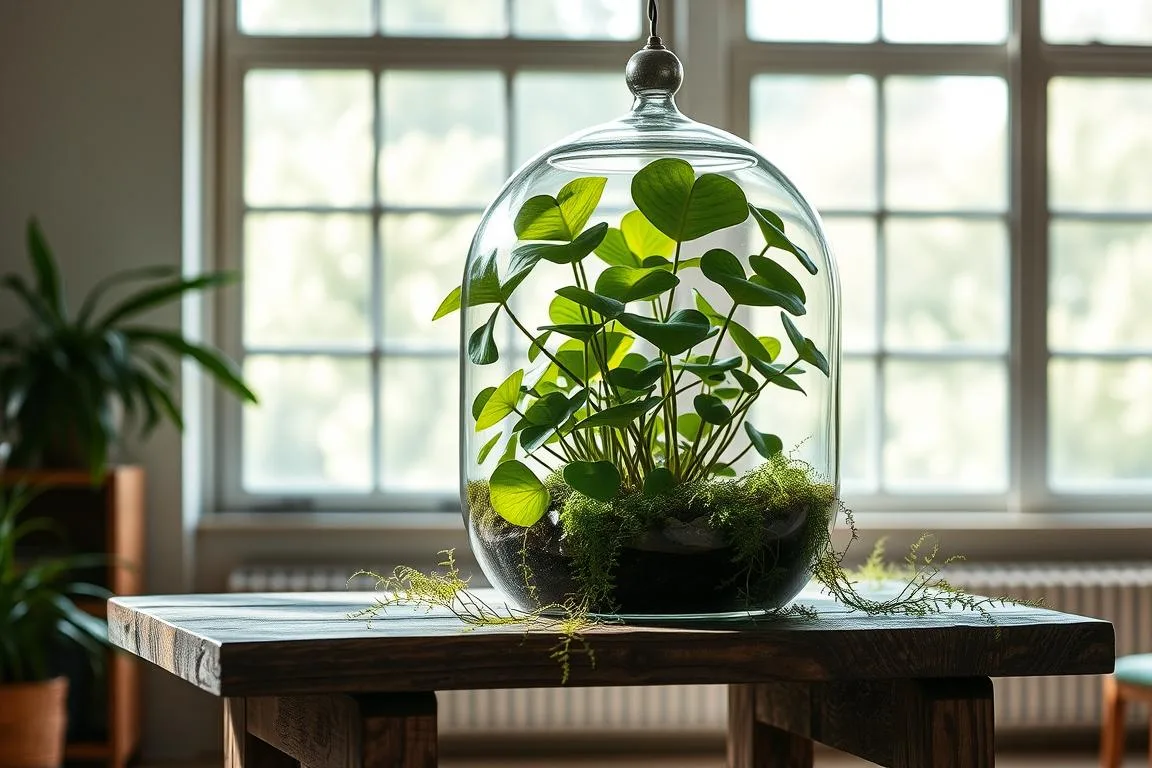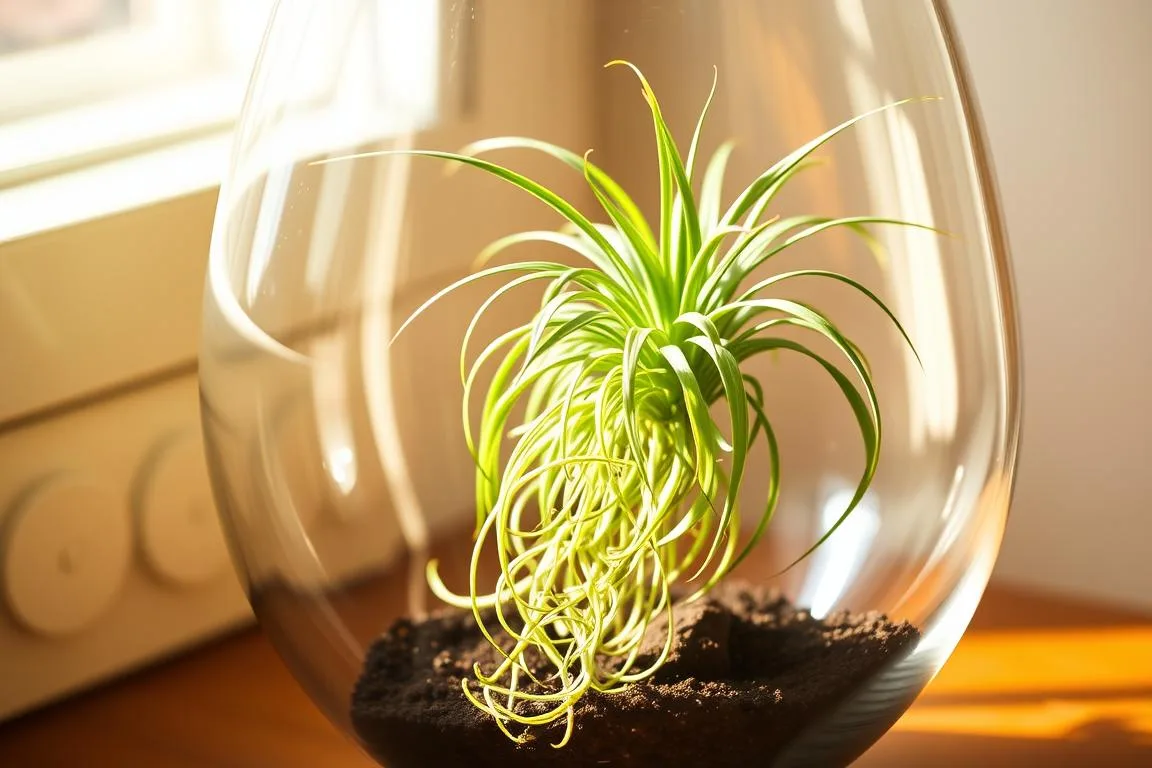Creating a thriving habitat for your scaly companion just got easier. Reptile enthusiasts are buzzing about naturalistic habitats that mimic wild environments—and for good reason. These setups not only look stunning but also encourage healthier behaviors like digging and exploring.
Why the hype? A self-cleaning ecosystem reduces routine maintenance while boosting your pet’s well-being. Think live plants, beneficial microbes, and a slice of nature right in your living room. Best of all, you don’t need a biology degree to pull it off.
This step-by-step guide walks you through every phase—choosing safe materials, balancing humidity, and selecting cleanup crews. We’ve packed it with tips from reptile experts to help you avoid common pitfalls. You’ll even learn how to maintain your mini-ecosystem long-term.
Ready to upgrade your pet’s home? Let’s build a space where your reptile can thrive naturally. By the end, you’ll have a gorgeous display tank that works smarter, not harder.
Introduction to Bioactive Enclosures for Reptiles
Imagine a mini-ecosystem where your scaly friend hunts, climbs, and basks just like they would in the wild. Bioactive setups transform ordinary tanks into living landscapes by combining soil, plants, and tiny cleanup crews. This approach lets reptiles express instinctive behaviors while creating a low-maintenance environment for owners.
Understanding Natural Behaviors
Reptiles thrive when their homes mirror native habitats. Desert-dwelling species dig burrows to regulate body temperature. Grassland types use rocks and foliage to hide from predators. A well-designed space encourages these actions, reducing stress and boosting mental stimulation.
| Bioactive Setup | Traditional Setup |
|---|---|
| Self-sustaining microfauna | Manual waste removal |
| Live plants improve air quality | Plastic decor requires cleaning |
| Natural humidity control | Frequent misting needed |
Benefits for Your Pet
These dynamic habitats offer more than visual appeal. Proper UVB exposure supports calcium absorption, while varied textures promote healthy footpads. Studies show enriched environments can even enhance breeding success in captive reptiles. For arid-loving pets, bioactive designs maintain ideal moisture levels without constant monitoring.
Planning Your leopard gecko bioactive enclosure Setup
Designing a home that mimics natural habitats starts with smart preparation. First, measure your space to choose a 20-30 gallon tank for adult reptiles—this allows room for burrowing and climbing. Place it away from direct sunlight and drafty areas to maintain stable temperatures.
- Substrate mix: 70% organic topsoil + 30% play sand
- Drainage materials like clay balls or LECA
- Glass terrariums (better humidity control than wood)
Create layered zones using a 2-inch drainage base and 4-6 inches of soil blend. This setup prevents soggy conditions while letting roots thrive. For arid species, add a shallow water dish—clean it daily to avoid bacterial growth.
Glass vivariums work best for monitoring moisture levels. Leave space for future upgrades like additional hides or climbing branches. Remember: A well-planned habitat grows with your pet’s needs!
Constructing Your Enclosure Framework
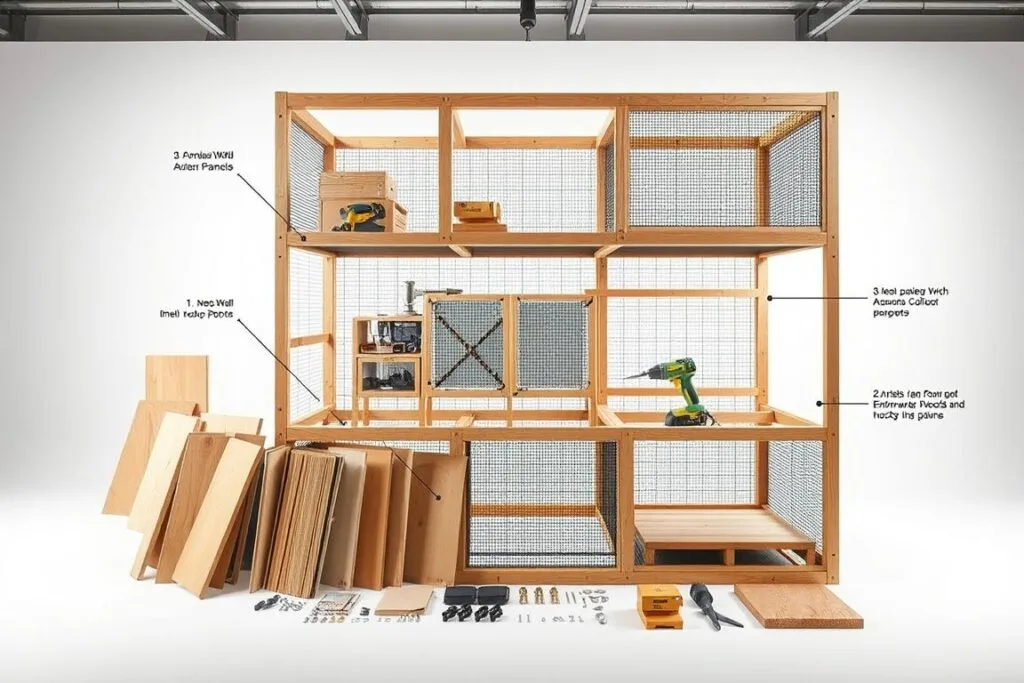
Building your reptile’s habitat begins with a solid foundation. Start by selecting a glass tank for better humidity control or a wooden vivarium for insulation. Glass works best for arid setups, while wood suits species needing stable warmth.
Create ventilation using mesh panels on the top and sides. Cut openings slightly smaller than your mesh pieces, then secure them with aquarium-safe silicone. This prevents escapes while allowing airflow—critical for preventing mold growth.
Next, build your drainage layer with expanded clay balls. Pour a 1.5-inch base across the tank floor. Cover it with terrarium fleece to separate substrate from standing water. Tuck a small PVC pipe into one corner as a hidden drain for excess moisture.
For backgrounds, carve foam board into rock-like shapes. Seal it with non-toxic grout and two coats of waterproof sealant. Make sure all edges are fully cured before adding excavator clay around the base—this natural binder keeps structures stable.
Arrange pieces of bark and driftwood before adding substrate. Position them against walls to create climbing surfaces and hideouts. Make sure each element sits firmly to prevent collapses. Finally, run a bead of silicone along any gaps where substrate might escape.
Your framework is now ready for planting! Double-check that all mesh is taut and seals are dry. A well-built structure supports both your pet’s adventures and the ecosystem’s balance.
Selecting the Best Substrate, Plants, and Clean Up Crew
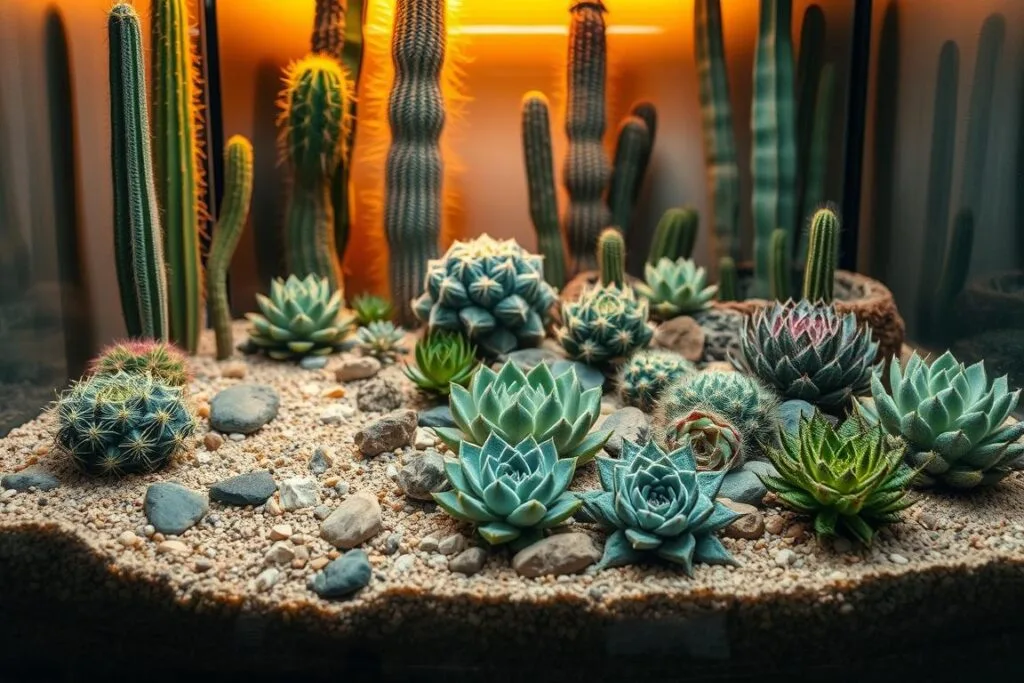
Transform your pet’s space into a functional ecosystem with three key elements. The right substrate mix acts like nature’s recycling center, while hardy plants add beauty and hiding spots. Tiny helpers called clean crew complete the circle by breaking down leftovers.
Start with soil that mimics dry regions. Mix 70% organic topsoil with 30% sand—this combo holds tunnels well while draining fast. Avoid dyed or treated substrates. Top it with bark chunks and dried leaves for natural texture.
Choose plants that thrive in dry conditions:
- Snake plants (tall, striped leaves)
- Jade plants (thick, water-storing stems)
- Aloe vera (spiky, low-maintenance)
Rinse plant roots before planting to remove chemicals. Bury them deep enough to stay upright in loose soil.
| Clean Crew Member | Job Description | Best For |
|---|---|---|
| Powder Orange Isopods | Eat decaying matter | Leaf litter breakdown |
| Tropical Springtails | Prevent mold growth | Surface cleaning |
| Desert Beetles | Aerate soil | Substrate maintenance |
Add your clean crew after plants settle in. Sprinkle them near moist areas under bark pieces. They’ll multiply naturally if the tank stays between 70-85°F.
Finish with decorative touches. Arrange flat rocks as basking platforms and tuck smaller pieces of wood between plants. These elements create visual interest while giving your pet climbing opportunities.
Remember—patience pays off! Your desert floor will become self-sufficient within 4-6 weeks as the system balances itself.
Installing Lighting, Heating, and Natural Decor
Balancing light and warmth transforms your pet’s space into a vibrant, functional ecosystem. Use UVB bulbs for calcium metabolism and LED grow lights to nourish greenery. Mount fixtures 8-12 inches above basking zones using secure brackets—this prevents screen blockage while delivering full-spectrum benefits.
Arrange wood pieces vertically to create climbing paths. Lean flat rocks against these structures to form sheltered hideouts. Position heat lamps over these rocky areas to mimic sun-warmed surfaces from natural habitats.
For plant growth, cluster various succulents near LED sources. Aloe and jade thrive under bright light, while snake plants tolerate shaded corners. Bury roots deeply in well-draining soil to prevent shifting.
- Use timer outlets for consistent light cycles (12 hours on/off)
- Place thermometers at both ends of the tank
- Angle lights slightly to avoid direct glare
Position the setup in a room with indirect sunlight—direct rays can overheat glass tanks. Leave 4 inches between decor and walls to ensure proper airflow. Rotate plants weekly for even light exposure, and watch your miniature landscape flourish!
Wrapping Up: Ongoing Maintenance and Long-Term Enjoyment
Keeping your reptile’s habitat thriving requires simple, consistent care. A weekly check of water dishes and humidity levels takes just minutes but prevents bigger issues. Monthly tasks like wiping glass surfaces and trimming overgrown plants keep the space looking sharp.
Replenish leaf litter every 2-3 months to feed your clean crew. Replace UVB bulbs every 6-12 months—even if they still light up—to ensure proper output. These small steps help maintain balance inside the tank without overwhelming your schedule.
Most pet reptiles thrive with minimal intervention once the ecosystem stabilizes. Spot-clean waste occasionally, and add more isopods if you notice uneaten food. For persistent mold, introduce tropical springtails—they’re nature’s cleanup squad!
Owners who would like a hands-off approach will love how these systems mature over time. With routine checks, your scaled friend enjoys a dynamic home that mirrors their wild habitat. Follow this guide, and you’ll master the art of low-effort, high-reward reptile parenting!

